The best engineered wood flooring – how to find the most durable types
Knowing what to look for in terms of durability, plank thickness, style and cost is key when picking out the best engineered wood flooring – ideal for all types of home.
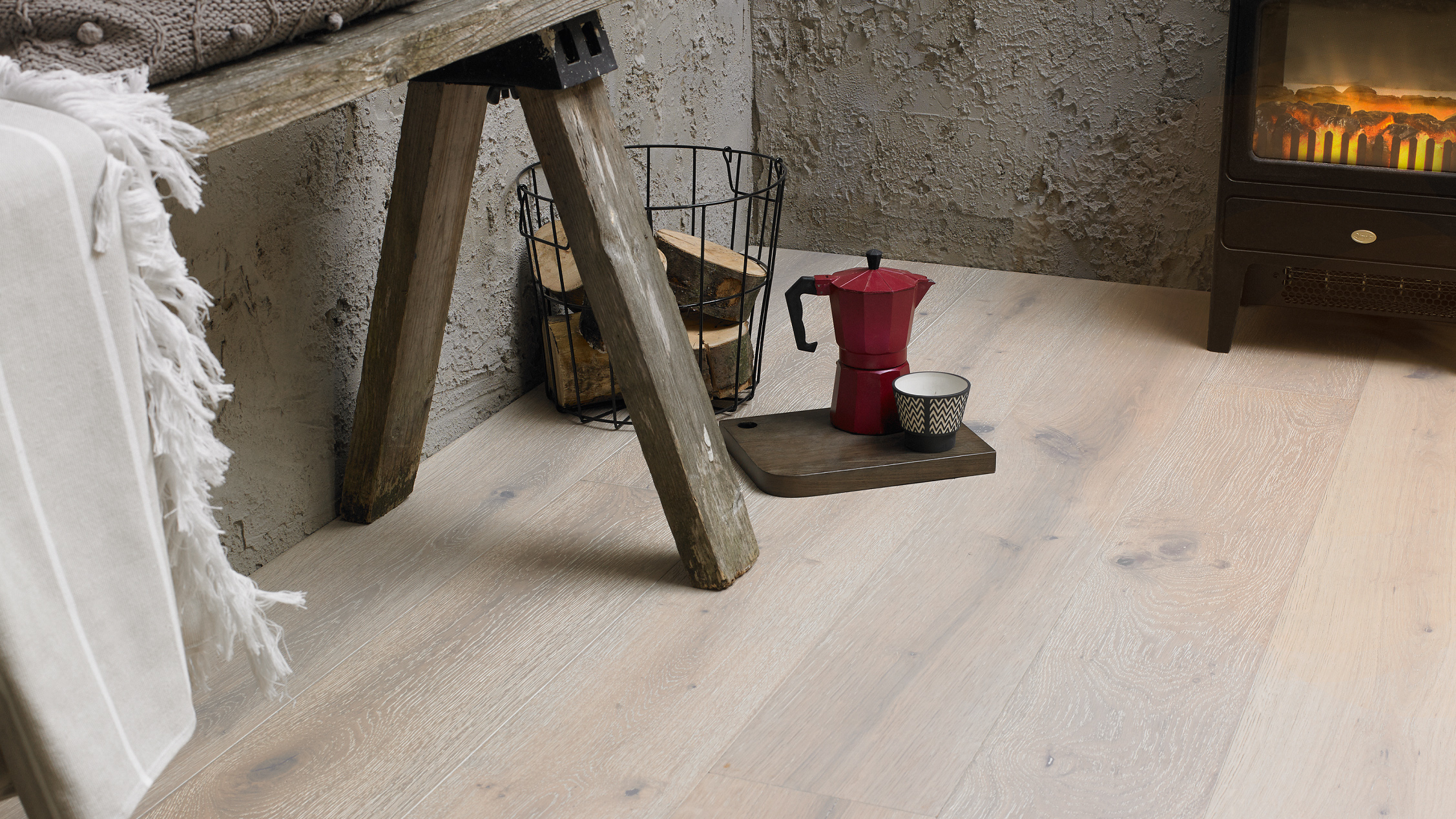
Hard-wearing and easy to maintain, the best engineered wood flooring makes a lovely addition to a contemporary or historic property. Fitted in the living room, hallway or bedroom, once installed, it can be almost indistinguishable from solid wood flooring with all benefits, but without the cost.
While there are many types of flooring materials to choose from, engineered wood is becoming the go-to for so many households as it ticks the boxes in terms of charm and style but is less susceptible to wear and tear in high-traffic areas. Plus, they are easier to keep in good condition also.

Some designs cost more than £300 per m², like the Intarsia Laser Cut Oak from Devon & Devon
Factory Direct Flooring's experts add how, 'Engineered wood gives a classic look for those wanting a real wood look without the price tag of a solid wood floor. With real wood veneer layered upon different compressed wood types, it’s a budget-friendly way to achieve a beautiful wood finish.'
How is engineered wood flooring made?
Unlike other alternatives to different types of wooden flooring, engineered wood is usually made entirely of timber. The floorboards are constructed of three or four core layers, usually plywood, which are stacked in a cross-grain configuration and bonded together under heat and pressure for stability and durability. This means that an engineered wood floor will not warp as a solid wood floor might. Although not recommended in highly damp areas of the home like the bathroom, the best engineered wood flooring will last far longer in damp spaces so make an ideal choice for below grade areas like basements. Some options have an environmentally friendly core made from recycled wood fibre. The planks are usually 1cm to 2cm thick, with a top layer of solid wood veneer.
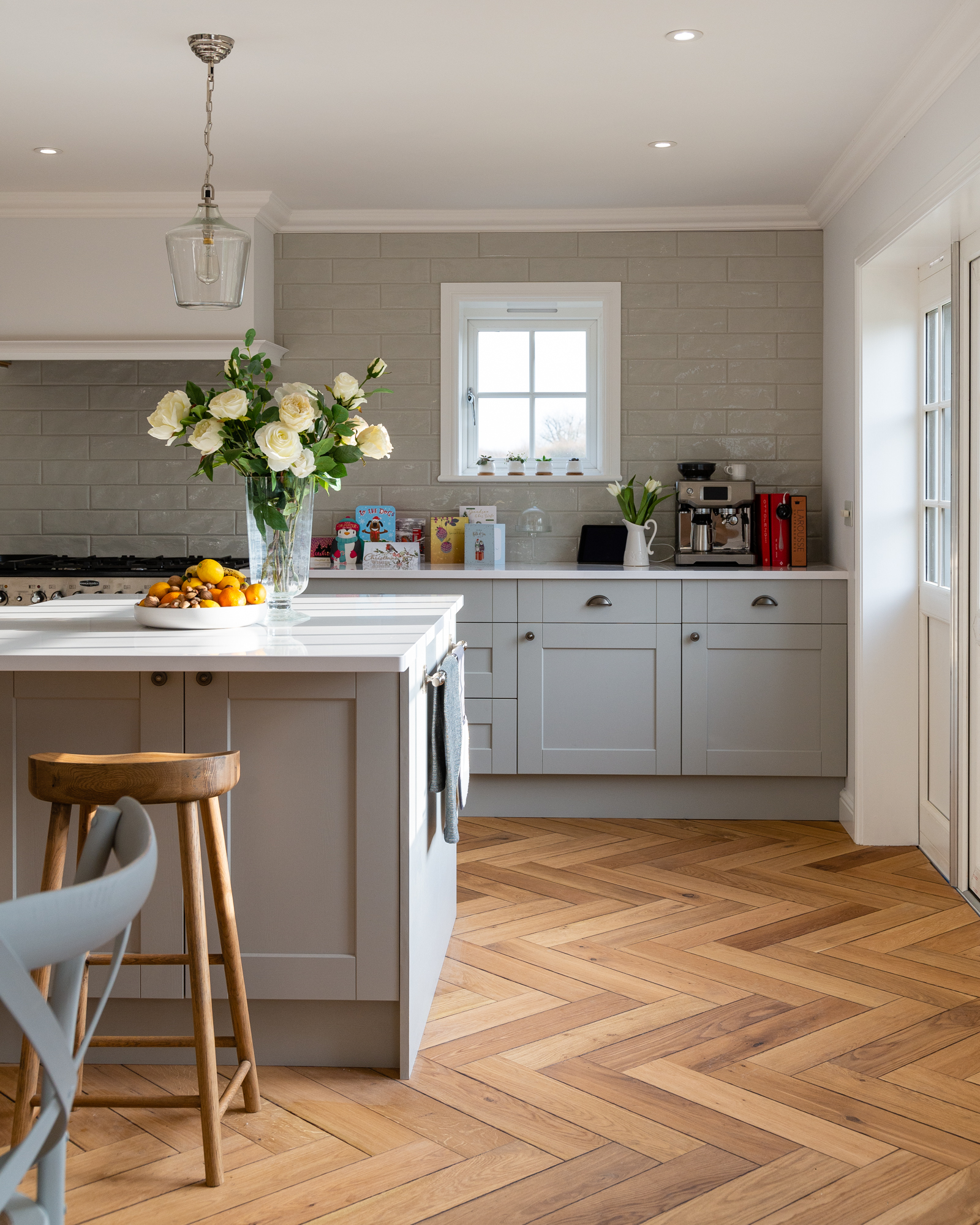
Natural oiled engineered oak with scorched edge laid in herringbone pattern, from £58.80, Beswick Stone
What is the most durable engineered hardwood flooring?
How durable the type of engineered wood flooring you choose is will depend on the strength of the wood species used. The Janka scale is a measure of hardness for different wood species so can be applied to engineered wood flooring types also. The rating is measured from 0 to 4000. For example, Red Oak has a Janka rating of about 1290 out of 4000, making this medium in terms of durability. White oak is a little higher at 1,360, Hickory is more durable ranking 1,820, Hard Maple at 1450, Birch at 1260 and so on. Note that a medium reading is ideal as anything too high will be too difficult to cut and install.
Durability will also depend on the finish applied by the manufacturer. This is what adds lustre and surface durability also. We would also recommend you try to find pre-finished engineered hardwood over unfinished hardwood. Even though the installer/you will refinish it, it will still be more durable when done at manufacturer level.
How much does engineered wood flooring cost?
Compared to other wood effect flooring, particularly when up against the best laminate flooring, engineered wood can seem expensive. However, it's important to consider that, on account of many engineered wood products coming with a manufactures guarantee ranging anywhere from 10 years to a lifetime, its durability does increase cost effectiveness. You can typically expect prices start from £30 per m² and go up £100 per m². And in the US, prices start around $198/sq. ft. ($39.00 /case) up to $509/sq. ft. ($118.65 /case) plus, for more high end finishes.
Cost will also vary depending on how thick the veneer is, but it’s worth investing a little more to get an engineered floor that will stand the test of time.

Kahrs Chevron Engineered Oak Wood by Carpetright. 95.99 per m2
Can engineered wood be laid over underfloor heating?
Most engineered flooring works well with underfloor heating, although it will need to be acclimatised before fixing.
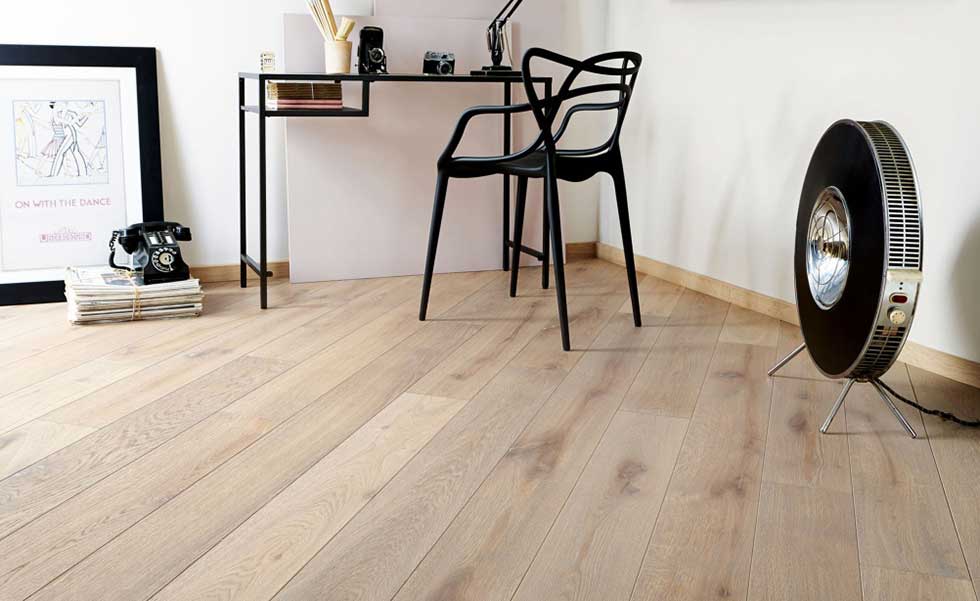
Coastline Engineered Oak Range in Washed Plank, £74.94 m², by Fired Earth
Where can you lay engineered wood flooring?
Engineered wood flooring is suitable for virtually any room. In addition to being perfect for high traffic areas, such as hallways and living spaces, some engineered wood floors can also be safely used in places where solid wood boards aren’t recommended, such as basements and bathrooms. This is because engineered wood can handle higher than normal moisture levels, rooms prone to high humidity or fluctuations in temperature.
If you are considering an engineered floor when choosing the best bathroom flooring, confirm with your supplier that your chosen flooring is appropriate. Some examples aren’t designed for rooms with high moisture, and could become damaged over time.
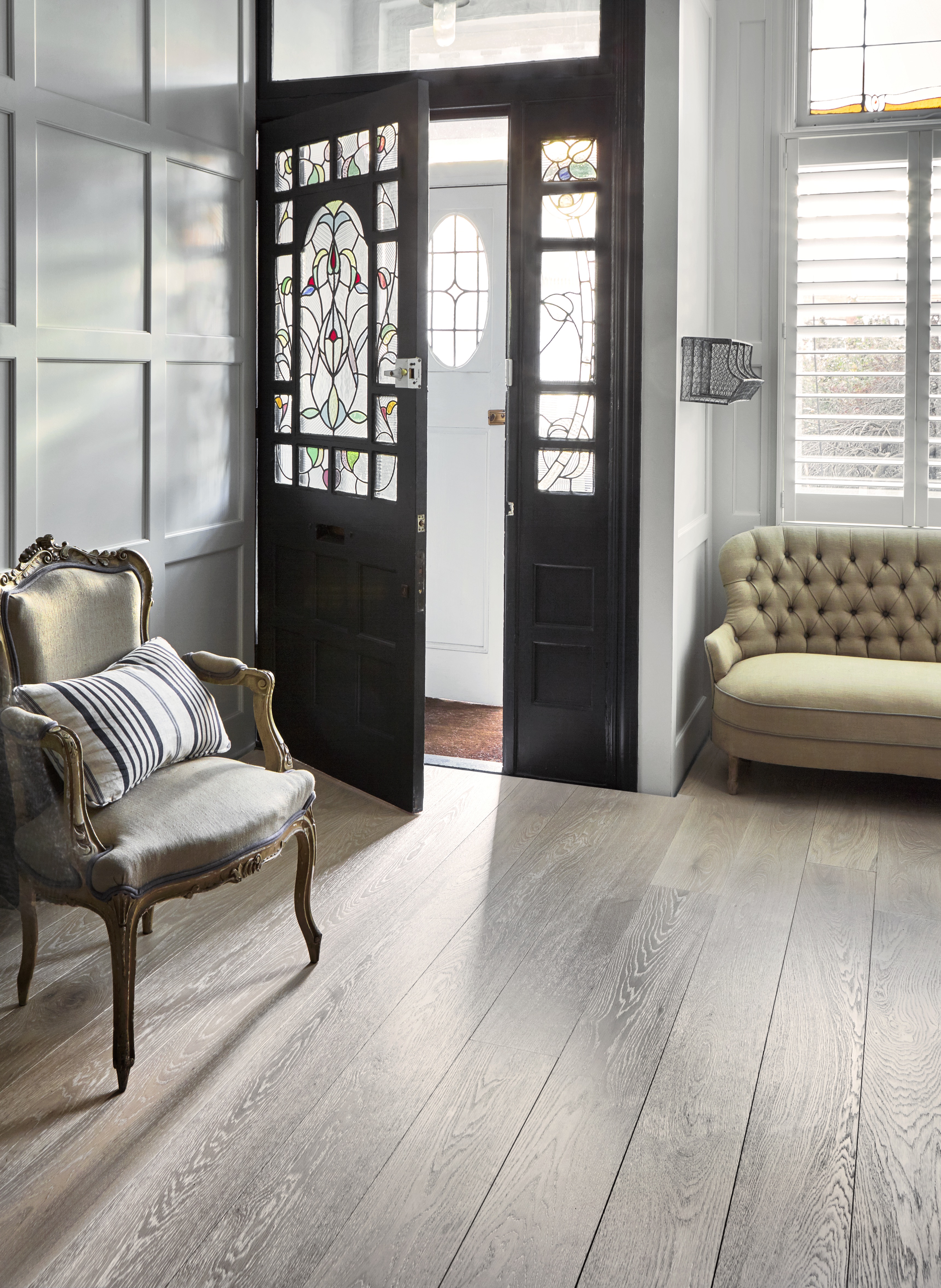
Oak White Engineered Flooring by the Natural Wood Flooring Co. £61.67 per m²
How to lay engineered wood flooring
Many manufacturers recommend professional fitting for a perfect finish, but as most of the ranges now come as a floating floor with a click-lock system, competent DIYers will be able to install it themselves. The advantage of this type of flooring is that if you make a mistake, with most systems, you can simply ‘unclick’ the planks and re-lay them.
As with most flooring, it is often the cutting out around door frames, corners and awkward spaces that shows the difference between a professional installation and a floor laid by the homeowner, so consider the professional option if you have invested a lot in the planks.
The choice of underlay is another important factor, as it not only protects the floor but provides thermal and sound insulation. Always use the type recommended by the manufacturer.
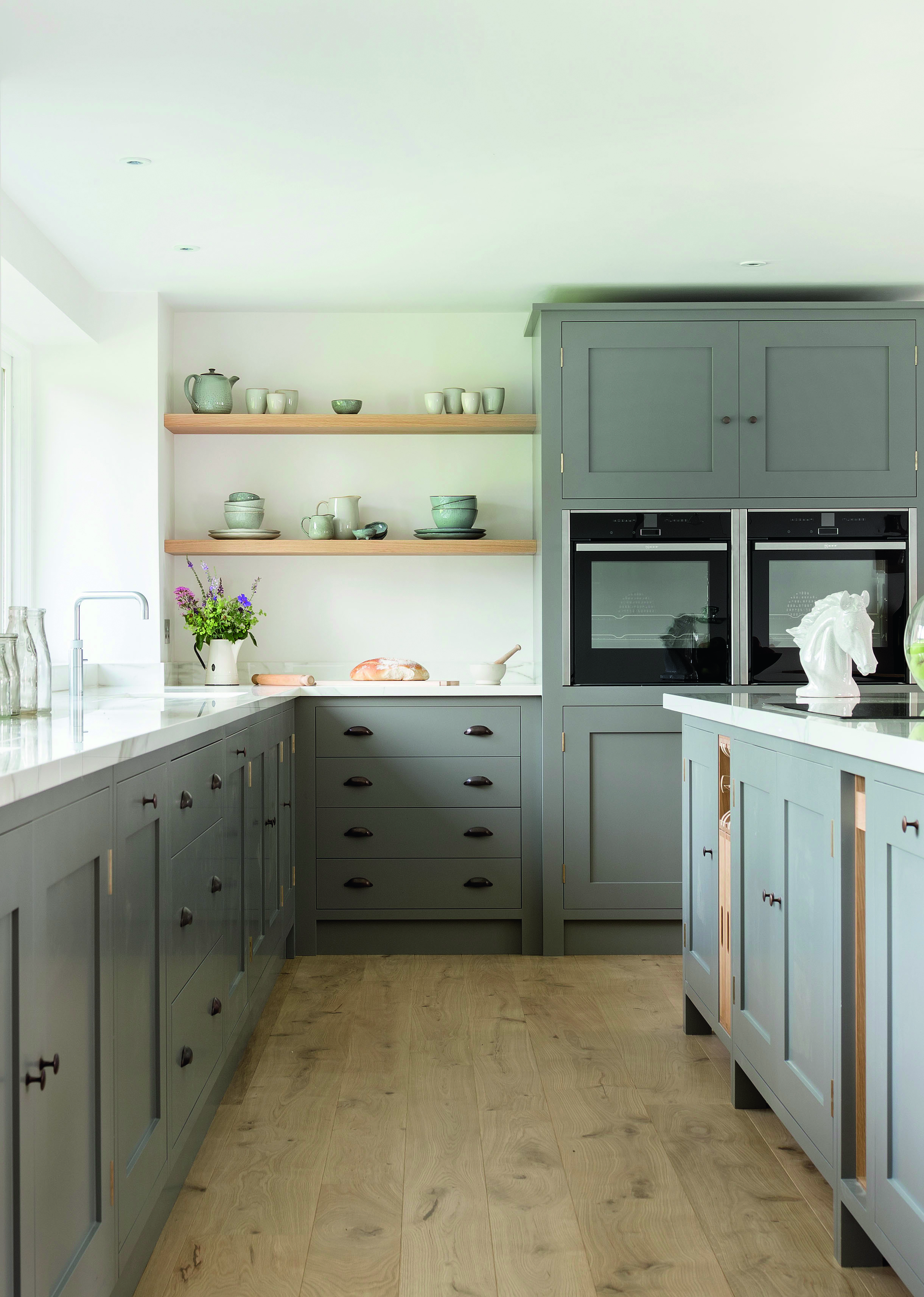
The Boulevarde engineered oak flooring from Indigenous is perfect for creating a Scandi look, retaining paler tones while revealing the natural graining within the oak. White oiled, with a bevelled finish, it costs from £70.80 per m²
Maintaining and cleaning engineered wood flooring
Generally, engineered wood flooring is supplied pre-treated and finished, so there is no need for sanding, oiling or varnishing, and you can walk on it straight away.
Once laid, it should be treated as you would hardwood floors. Ensure you are cleaning wooden floors by sweeping regularly or vacuuming using a brush setting. Mop up any spills immediately. Ensure that even the best mop is not saturated so you don't allow the surface to become too wet, as this can cause damage.
Refer to the manufacturer’s instructions as to whether the boards require regular lacquering or oiling. As with most natural products, sunlight can affect the wood’s colour over time.
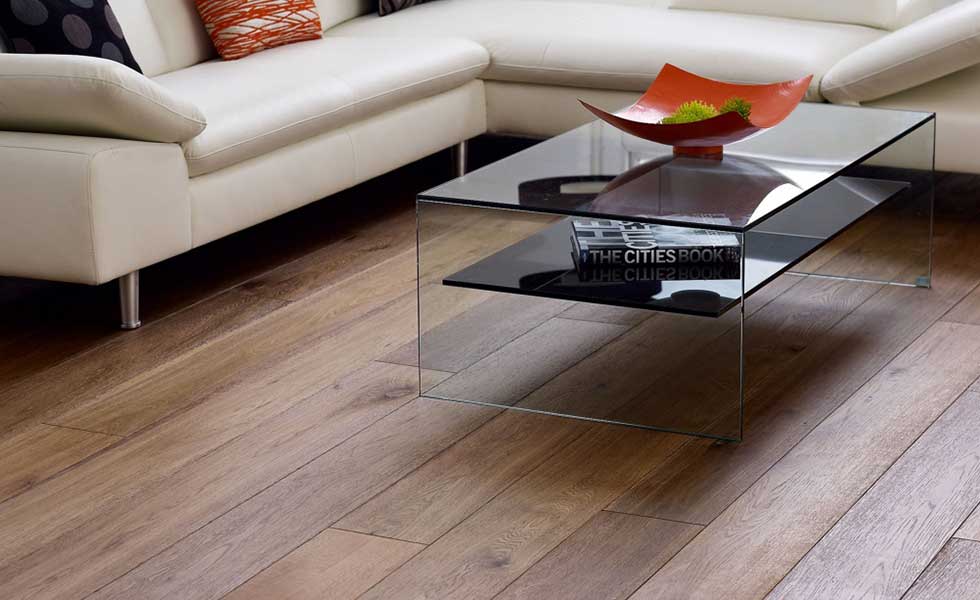
Oak Smoked Brushed and UV Oiled Engineered Range, £70 m², from Kersaint Cobb
To prevent scratches and damage, fit felt pads or castors to items of furniture that might be moved across the floor and bear in mind that heeled shoes will dent wooden flooring. If the boards do become scratched or lightly damaged, all is not lost, as most engineered wood flooring can be sanded a couple of times during its life. It is recommended that you use a professional for this job, though, as the veneered top layers are thin.
What are the best engineered wood flooring brands
Going local is often a great option. We also find the offerings at Home Depot and Lowes in the US; B&Q (UK) and Wayfair reliable, ideal for different budgets and warranty needs too. You can usually find samples and if not a full installation service, plenty of advice on how to DIY.
Where to find a reputable fitter for engineered wood?
The best route is to get a personal recommendation, but if friends and family can’t help, then most engineered wood flooring retailers will either offer a fitting service or recommend local installers.
Otherwise, use websites such as Check a trade or Rated people for information and comments from other homeowners in the local area. The National Institute of Carpet & Floorlayers can also give you a list of its members near you if you are UK based.
Get small space home decor ideas, celeb inspiration, DIY tips and more, straight to your inbox!
Anna is a professional writer with many years of experience. She has a passion for contemporary home decor and gardening. She covers a range of topics, from practical advice to interior and garden design.